#Greece in the 1950s
Explore tagged Tumblr posts
Text

Greece, 1952. Ernst Haas. Gelatin silver print.
#black and white#photography#fotografia#fotografie#photographie#greece#windmill#coast#vintage#1950s#foto
362 notes
·
View notes
Photo
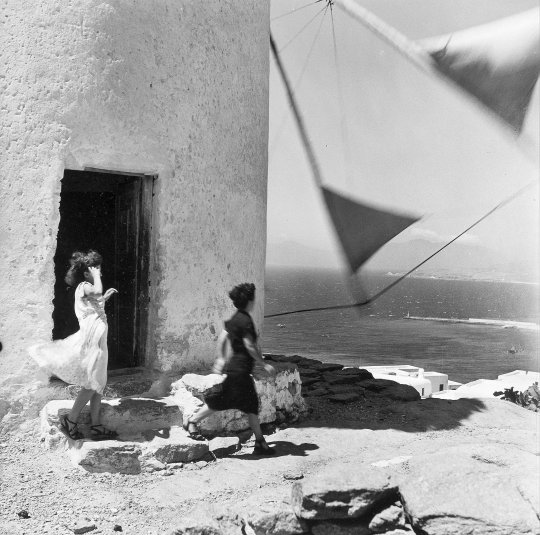
Ernst Haas. Windmill. Greece. 1952
I Am Collective Memories • Follow me, — says Visual Ratatosk
#BW#Black and White#Preto e Branco#Noir et Blanc#黒と白#Schwarzweiß#retro#vintage#Ernst Haas#Windmill#Greece#1952#1950s#50s#sea#seashore#beach#mer#littoral#plage#Meer#Küste#Strand#mar#litoral#praia#海#海岸#ビーチ#costa
338 notes
·
View notes
Text
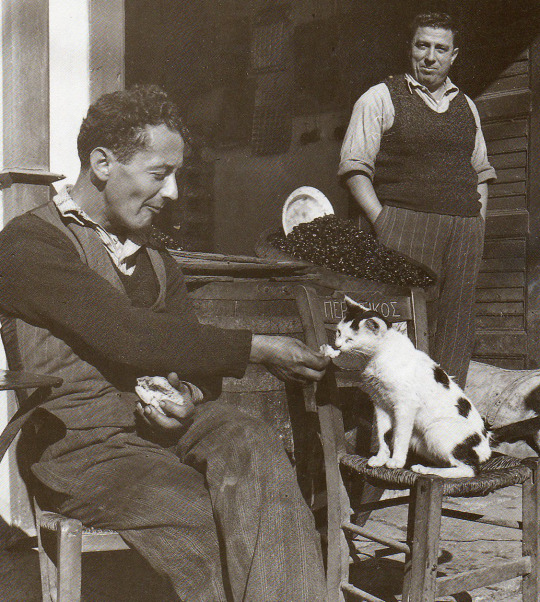
Lunch! Ca. 1950s. Source.
807 notes
·
View notes
Text

Sophia Loren in Boy on a Dolphin (1957)
21 notes
·
View notes
Text

Mercedes Benz O322 της Βιαμάξ με αριθμό ανεμοθώρακα «20» στο ΚΤΕΛ Θεσπρωτίας, ιδιοκτήτης ο Κώστας Ντάνης.Στη φωτογραφία από τον Βασίλειο Παραμυθιώτη, επάνω, ο Ντάνης από την πρώτη ημέρα παραλαβής του λεωφορείου του από τη «Βιαμάξ», σε κυκλοφορία με δοκιμαστικό αριθμό τύπου «Μ».
Πηγή και περισσότερα στο:https://busoldtimers.blogspot.com/2014/10/blog-post_25.html
#λεωφορείο#ΚΤΕΛ Θεσπρωτίας#αριθμός 20#Mercedes Benz O322#Βιαμάξ#1950s#Κώστας Ντάνης#bus#old bus#Greece#Thesprotia#Epirus#50s#old photo
7 notes
·
View notes
Text

4 notes
·
View notes
Photo

Demetrios Charisiades, Epidavros, 1956
Δημήτριος Χαρισιάδης, Επίδαυρος, 1956
1 note
·
View note
Text

The temple of Apollo, Delphi, Greece, ca. 1950 - by Voula Papaioannou (1898 - 1990), Greek
686 notes
·
View notes
Text
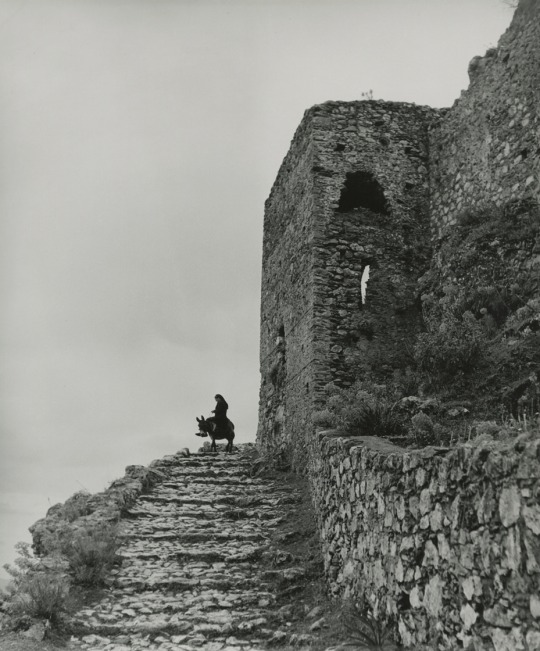
Armin Haab (Swiss, 1919 - .1991)
Mistra, Greece 1950
166 notes
·
View notes
Text
More people should play around with what time the Fawcett City time bubble thing happened.
The most often ones I’ve seen are, 1960s, 1950s or 1930s.
Yeah, we love those. They’re the most canon compliant and have good comedy potential already.
Id like to propose some other years that would be funny.
Early 2000s, just early enough that the kids would have understood technology and know they don’t and they’re really annoyed.
1970s, not much different but it gives Billy the chance to meet some people’s parents and do some wild stuff.
“Oh Martha Wayne? I remember her, we smoked crack together.” (Drugs can’t effect him as Captain Marvel it’s fine guys)
1940s, I’m talking early 40s, I want them kids growing up on RATIONS.
1915ish, guys i want them to catch the Spanish Flu. Because I hate them.
Anytime before the 20th Century, it can be the literal end of the 1800s, it can be Ancient Greece. Idgaf, it would be hilarious. Cap just starts talking about the actual plague or some shit, AWSOME.
Listen, I believe that Fawcett is weird enough that we can get away with saying that it wasn’t even originally in America. Put them fuckers is Wales and have them be close friends with Merlin, have them be ancient Romans, Egyptian would be funny with the whole Black Adam shit, let them be from like the middle of fucking Asia or some shit.
Guys please it’s so funny to imagine geographers trying to explain why a random town actually just appears in Philadelphia and none of them speak English.
#yapping#fawcett time bubble#fawcett city#weird fawcett city#it’s not even Canon at the moment I can do what I want with that weird ass city#dc#dcu#dc comics#billy batson#shazam#captain marvel#dc captain marvel
359 notes
·
View notes
Text
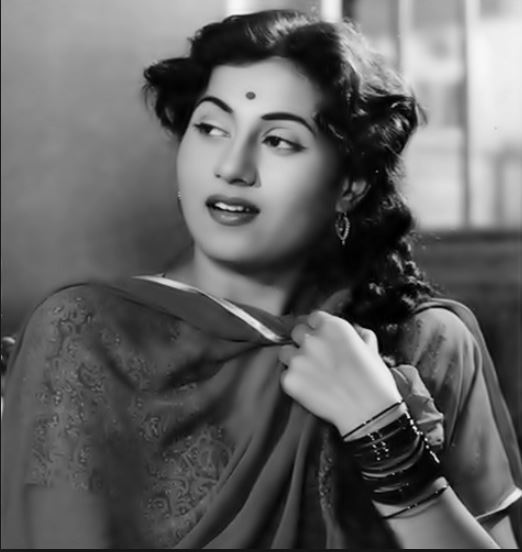

Propaganda
Madhubala (Mughal-e-Azam, Barsaat Ki Raat, Mr. & Mrs. '55)—The Venus of India; heart-throb of all who saw her; responsible for the sexual awakening of every single desi lesbian I know (including me!) And my god, she is breathtakingly beautiful. Look at the subtle grace with which she moves, and that smile - the kind of radiant smile that can make you laugh with sheer delight, or cry because of its hidden pain. Those wild curls! That Cupid's bow! The way she tilts back her head and smiles at you with mischief dancing in her eyes! She has a way of looking at the camera that makes you feel she's sharing a private joke just with you; it's something about that quizzical twist of the lips and eyebrows. As an actress, she is inimitable; she seems to effortlessly inhabit roles ranging from a heart-broken courtesan to a laughter-loving socialite. Fun fact : she's had quite the fan following in Greece! Stelios Kazantidis even wrote a song as a tribute to her.
Ingrid Bergman (Gaslight, Casablanca, Notorious)—Where do I even begin with Ingrid Bergman? I fell in love with her with her astounding performance in the 1956 version of Anastasia -- the best Anastasia movie in large part due to her wonderful and touching performance. She's got this amazing, fascinating intensity to her in whatever role she's in. She commits 100%, and she's got this light in whatever she's in that's stunning. She's utterly convincing no matter what she plays, from an amnesiac possible lost princess, from a nun, from a woman taking her revenge on the town that wronged her, to light romantic comedy. She's never missed in any role I've seen her in! Also she became quite the MILF.
This is round 5 of the tournament. All other polls in this bracket can be found here. Please reblog with further support of your beloved hot sexy vintage woman.
[additional propaganda submitted under the cut.]
Madhubala:

An icon of Bollywood, who was well known for her beauty and has continued to inspire performances and songs into the 21st century. She was at times described as "the number one beauty of the Indian screen" and "the biggest star in the world".
SHE IS EVERYTHING AHHH. JUST LOOK AT HER SMILE-

She's been nicknamed the Marilyn Monroe of India and was one of the highest paid actresses in the Hindi film industry (the term Bollywood did not exist yet) during the 1950s. Also an extremely talented dancer and singer

SHE'S JUST SO STUNNING, like seeing her eyes IMMEDIATELY CAPTIVATES YOU, THE DANCING, THE BEAUTY!!!!!!!!! She worked in Bollywood for over 20 years and passed away at a sad early age of 36, BUT THE IMPACT SHE HAD WAS UNMATCHED!!!!!

That sassy sideways glance she does always has me WEAK AT THE KNEES. And when she's making silly faces at the camera to mimic someone ahhhh my gay little heart <3
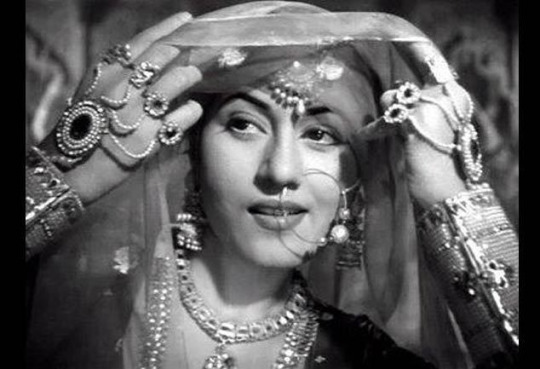
Ingrid Bergman:

God, she's fantastic. She's both beautiful and a compelling actor who's more than capable of putting the whole movie on her shoulders if necessary. It's worth noting that while her beauty is conventional, she was seen as refreshingly "natural" with more eyebrows and less makeup than many other leading ladies of the time. She's well known for her role in Casablanca, but in Notorious, Spellbound, (both available on archive.org ) and Gaslight (1944) she shows how immensely capable she is.

I mean...she's Ingrid Bergman. I feel like that should be enough, you know? She's physically beautiful (her eyes!) but watching her is like a transcendent experience. Her voice, her expressions... beautiful woman, beautiful actor.
I'm a gay man but even I understand her appeal. I'll watch any movie she shows up in. Gorgeous woman.
Just try and watch her movies without sighing wistfully, then get back to me!
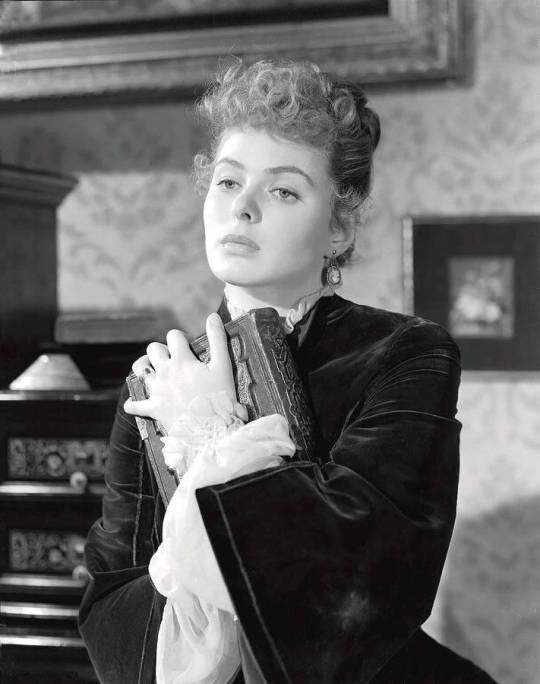
Choosing 1-3 movies where Bergman was at her hottest was agony because, of course, she was always at her hottest. Not just because she was beautiful but because she was absolutely willing to go up against the bs women in Hollywood were constantly dealing with. When exiled from Hollywood for having an affair with Roberto Rossellini, not only did she refuse to apologize at any point, but she went on to say that Hollywood's films had grown stagnant and boring to her. Though she said she appreciated her time working there, she wanted to try new, different techniques (hence starring in Italian neorealist films, working on stage, and acting under directors like Ingmar Bergman). She was not afraid to chase after her artistic ideals and go outside the box regardless of what society had to say about it. From her first movie to her last she killed it. There's so much more to say about Bergman's career and life, but I've already written five million words so I'll stop at that.
ion words so I'll stop at that.
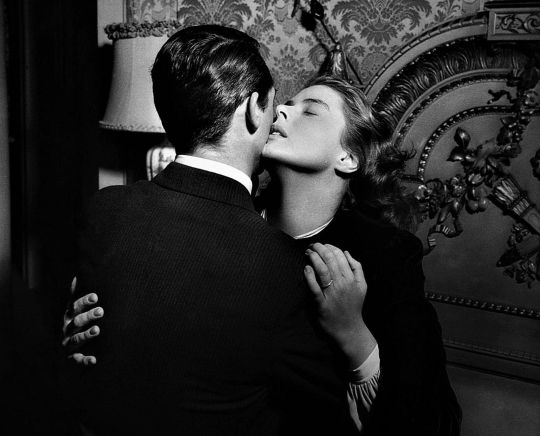
One of the most incredible actors I've ever seen on film. Her facial expressions are so intricate and poignant that I cannot look away. I'm either ace or straight, but damn she made me question that.
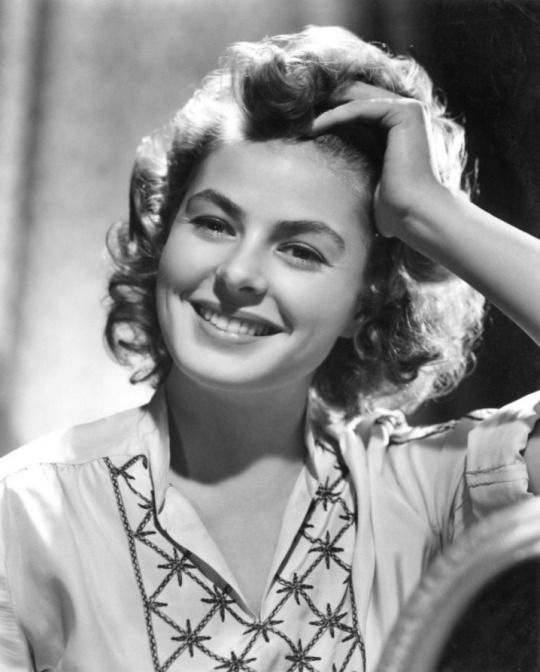
SEVEN TIME OSCAR NOMINEE QUEEN. Girl also PULLED, having affairs with famously hot men Gary Cooper and Gregory Peck IN ADDITION to her three marriages...sexy
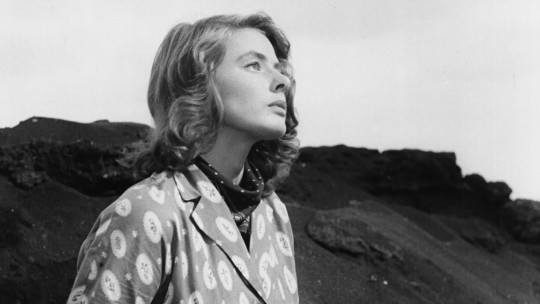
She has a very natural beauty to her, and she's from Sweden!
She left Hollywood and only became more beautiful. You could drown in her eyes. She can look innocent AND like she's seen it all. She is effortlessly elegant. She's played Joan of Arc (automatically hot) AND was in the movie that coined gaslight as a term. And where would we be without that!
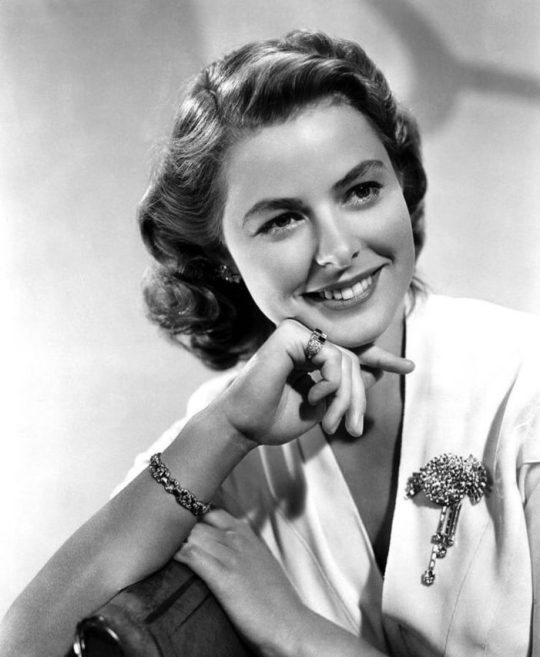
She was known for being a breath of fresh air on the movie scene at the time with her windswept hair, dreamy smile and soulful eyes. I have loved her in every movie I have seen her in - she was just magnetic!
Where do I even start. There's a neighborly quality to this beautiful, talented actress that makes her hotness one of a kind and her looks impossible to forget
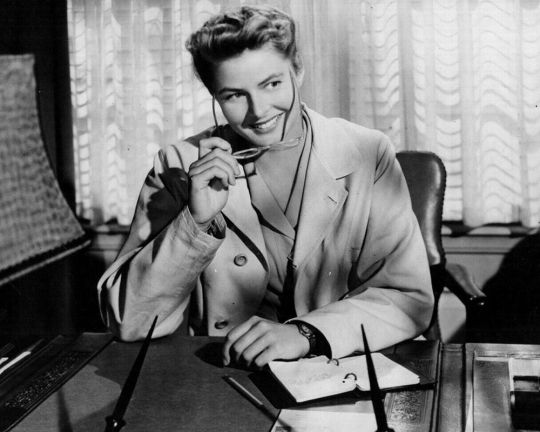
With a career spanning five decades, Bergman is often regarded as one of the most influential screen figures in cinematic history. Known for her naturally luminous beauty, Bergman spoke five languages – Swedish, English, German, Italian and French – and acted in each.
She's hot, don't get me wrong, but I've always found her very approachable, like she could easily be a member of my friend group
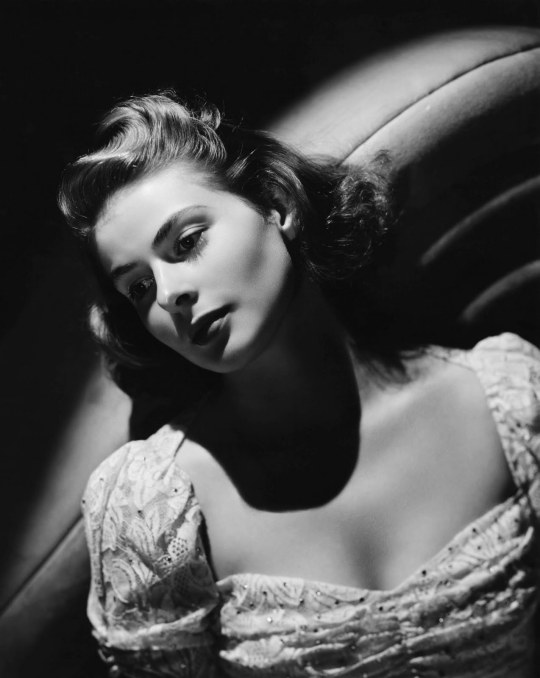
A lot of the time hotness in a movie is just about words and framing. "You're the most beautiful person here" [vaseline lens] well I sure hope so because that's who you cast. But when, in Casablanca, they call Ingrid Bergman the most beautiful woman in the world... they were not fucking lying. And such a dynamite actor too!! I'd only seen Casablanca up until last year, and there she's confined to love interest. But in Gaslight she was maybe one of the most incredible actors I've ever seen!!!! Goddddd shes so fucking hot and cool.

437 notes
·
View notes
Note
Hi! Love your blogs. I couldn't find anything on 'vampires' in your references. I was wondering if you could cover this illustrious yet monstrous figure? Many thanks!
Writing Notes: Vampires
Vampire - (in popular legend) a creature, often fanged, that preys upon humans, generally by consuming their blood. They have been featured in folklore and fiction of various cultures for hundreds of years, predominantly in Europe, although belief in them has waned in modern times.
Common Depiction:
A bloodsucking creature
Rises from its burial place at night, sometimes in the form of a bat, to drink the blood of humans.
By daybreak, it must return to its grave or to a coffin filled with its native earth.
Tales of vampires are part of the world’s folklore, most notably in Hungary and the Balkan Peninsula.
The disinterment in Serbia in 1725 and 1732 of several fluid-filled corpses that villagers claimed were behind a plague of vampirism led to widespread interest and imaginative treatment of vampirism throughout western Europe.
Vampires are supposedly dead humans (originally suicides, heretics, or criminals) who maintain a kind of life by biting the necks of living humans and sucking their blood; their victims also become vampires after death.
These “undead” creatures cast no shadow and are not reflected in mirrors.
They can be warded off by crucifixes or wreaths of garlic and can be killed by exposure to the sun or by an oak stake driven through the heart.
Origin. Creatures with vampiric characteristics have appeared at least as far back as ancient Greece, where stories were told of creatures that attacked people in their sleep and drained their bodily fluids.
Tales of walking corpses that drank the blood of the living and spread plague flourished in medieval Europe in times of disease.
Cultural historian Christopher Frayling points out how the vampire myth is a parody of the Christian resurrection and a “satanic version” of transubstantiation—the Catholic belief that during Holy Communion the bread and wine change into the body and blood of Jesus Christ.
The vampire myth allows us to examine societal taboos we aren’t always able to discuss. “It’s about wanting a demon lover to take you over; about desiring undesirable things,” Frayling explains. “It transposes them into this myth in a rather pleasurable way.”
Hatred of Garlic. Many cultures have long believed in the extraordinary powers of garlic; from ancient Egypt to Romania, garlic has been used as a natural insect repellent, a natural antibiotic, and as protection against other preternatural evils. Modern belief in garlic’s curative powers against vampires likely comes from these more ancient beliefs.
Literary Examples
The most famous vampire is Count Dracula from Bram Stoker’s novel Dracula (1897).
In the 20th century Anne Rice’s novel Interview with the Vampire, published in 1976, notably introduced the world to vampires that were brooding and self-loathing and squabbled like humans.
Modern vampire treatment in popular culture is usually divided into cycles.
The Malignant Cycle (1922-1948): The vampire is treated as a creature of pure horror, as popular in the early films like Nosferatu and Universal films.
The Erotic Cycle (1950-1985): The vampire is considered evil but alluring, like in the Hammer Horror films.
The Sympathetic Cycle (1987-2001): The vampire is seen as a tragic monster to be pitied, but still feared, though they can sometimes be redeemed, usually by becoming human once more.
The Individualist Cycle (2003-present day): The vampire can be bad, good, or in between, much like humans, and their transformation to vampirism does not imply a change in morality.
In modern vampire literature, the shift from the vampire’s legendary Gothic characteristics to a more romanticized heroism becomes apparent.
The 20th and 21st centuries brought about a new version of the classic vampire.
This creature distances itself from the dark, horrifying being and grows into a more desirable partner (both romantically and socially) than its predecessors.
As was seen in the vampire literature of earlier centuries, the vampire was always the one who attacked because of repressed sexual desires.
Instead, now the human poses the larger threat for the modern vampire to have the ability to control his blood lust because the human now seemingly has control over the vampire’s sexual agency.
The female characters have been refashioned from being threatened to posing more of a (sexual) threat. Examples:
Isabella Swan from The Twilight Series and Gabrielle Maxwell from the Midnight Breed novels actively seek a sexual relationship with their vampire counterparts and are even willing to abandon their identities and constantly risk their lives for a chance to become part of the vampire world.
This contrasting presentation of the vampire’s romantic characteristics could be associated with the time period’s viewpoint of sexuality.
Instead of the repressed sexuality that were apparent in 18th and 19th century works, the modern Byronic vampire is not the main villain who presents danger to those around him.
The vampires are the now the victims who are tasked with repressing their desires, while humans seek to fulfill their desires in becoming a part of the vampire world.
Some Vampire Tropes
Animorphism: Vampires commonly turn into bats (or other nocturnal animals, such as wolves).
Chinese Vampire: An undead being from Chinese Mythology called the jiang shi, depicted as a hopping vampire/zombie that feeds on chi.
Cross-Melting Aura: Some vampires are powerful and evil enough to repel or destroy holy weapons.
Daywalking Vampire: Contrary to most depictions, some vampires may actually be immune to sunlight.
Horror Hunger: A person starts to feel intense cravings for blood after being turned into a vampire. How well they're able to resist these urges can vary.
Missing Reflection: Vampires often do not reflect any image in mirrors. Sometimes extends to not appearing in photos, films or videos as well.
Turning Back Human: A common goal for people who've been involuntarily vampirized and don't want to stay this way.
Undeath Always Ends: When even undead vampires can still die.
Voluntary Vampire Victim: Someone willingly lets a vampire feed on them.
Wooden Stake: Stabbing or impaling vampires through their heart with a sharp, pointy wooden stick is the classic method for killing them.
Sources: 1 2 3 4 5 6 ⚜ More: References ⚜ Writing Resources PDFs On Vampires (Part 1) ⚜ (Part 2)
Hi, thanks so much for your kind words. Hope this helps with your writing!
#anonymous#vampire#writing notes#character development#writeblr#writing reference#writers on tumblr#dark academia#literature#spilled ink#creative writing#writing prompt#writing ideas#tropes#writing inspiration#light academia#writing resources
131 notes
·
View notes
Text
According to the app Earthquake (Σεισμός in its Greek language version) with international coverage (if you live in a seismic country download it right now), as I am writing this at 16:00 there have been 220 earthquakes since midnight, occurring around Santorini and the South Cyclades islands, across the Aegean arc (also known as Hellenic arc). While many scientists say the cause is tectonic and not volcanic, some scientists from Greece and abroad support they are indeed volcanic warnings.
It’s not good news either way…
The earthquakes seem to slowly increase in magnitude with the biggest one at 5.0 R two hours ago. There have been small landfalls reported in Santorini, an island with hilltop built towns.
The last explosion of the Thira (Santorini) volcano occurred in 1950.
The local population is evacuating the island with ships and airplanes just to be sure.
@alelx2194
#Greece#Santorini#signal boost#volcano#earthquake#Greek news#Greek facts#cyclades#Cycladic islands#Greek islands
63 notes
·
View notes
Text
from my December readings, I’ve collected a few more merlin fic recs for the people…
For favorite long (80k+) fic, I would have to choose Drink my Pain, Swallow Your Pride by Lex18. I’ve read another fic I love by this author and if you’re looking for just the most fan fiction fan fiction that hits the spot, READ. It’s got sexual tension, it’s got vampires, it’s got werewolves, it’s got familial secrets, its canon era, it’s everything you want to indulge in and more. I, for one, love the vampire Arthur agenda and please give me more 🙏🏻
For favorite mid length (30k-80k) fic, I would have to stretch the boundaries a bit and choose the 85k A Summer in Delphi by rotrude. I went on a spree of reading this authors work and their variety is amazing. This was full of self acceptance, beautiful love blossoming, some tears, and a whole mountain of emotion with the characters in a 1950s Greece setting. Definitely recommend!
For favorite short fic (<30k) I would have to pick this short smutty fic called Beware the River by I_ran_out_of_books. if you’re into some magical being (?) smut I definitely recommend, it’s a little wild but the concept is great (and, in my humble opinion, underused). A succubus/siren creature in canon era morphing into what Arthur desires the most, aka merlin, and then merlin seeing this go down? sign me up
I’ll fire off some other fics I enjoyed this month here~
You have got to be kidding me by Diamondmask, painful but still so good modern slice of life merthur fic. A LOT of up and down emotions with this guy
Two Hundred A Heat by SauraUnderscore, smutty modern omegaverse tropes for a quick and fun read
A West-Country Romance by rotrude. really had me so soft by the end, them being so desperate for each other gets me misty eyed. a great historical forbidden romance vibe
Midnight Dragon by rotrude also had such a fun premise, modern enemies to allies, opposites attracting, yummy yum yum
I’m 100% serious when I say I’ve read heaps of rotrude’s merlin fics this past month. if you don’t know what to read, go through their works! There’s 168 of them and they’re all unique and wonderful. I was hard pressed to not keep repeating their name over for my recs this month, and I guarantee they’re showing up in January recs again too!
For my favorite reread in December I’d have to go with Arcane Asylum by new_kate. It’s another popular one, but I started rewatching the show prison break recently and it got me in the mood for this kind of gritty modern magic fic. Merlin is extremely BAMF in this and Arthur is his grounding center. beware of the tags but it still is a great read if you haven’t checked it out!
That’ll be all for this month! I’ve been relaxing over winter without my computer so when I have access to that I’ll be making my list of my merthur 2024 fic recs. rest assured I have a lot to say and a lot to love, and I’ll be back in a few weeks with January’s recs too!
(which… god, if I keep up this pace the 2025 stats will be just as insane as the 2024 ones)
how insane, you may ask… Check out my 2024 merthur stats here!
want more recs? Check out some of my other posts!
<< prev month next month >>
#mythmerth fic recs#mythmerth monthly merlin#merlin fic recs#fic recs#ao3#bbc merlin#merlin#merthur#arthur pendragon#merlin x arthur#bbc merthur#merlin emrys#bbc merlin fan fic#arthur#bbc merlin fanfiction#ao3 recs
39 notes
·
View notes
Text

Η πατρινή εταιρεία Λούξ που τα τελευταία χρόνια έχει ανοίξει τα φτερά της και έχει κατακτήσει την ελληνική και την ευρωπαϊκή αγορά με τα αναψυκτικά της είναι προφανώς γνωστή σε όλους.
Στην φωτογραφία είναι οι παλιές - μάλλον και πρώτες- εγκαταστάσεις της εταιρείας .Έξω από την κεντρική είσοδο αραγμένο το ιστορικό και αγαπημένο FIAT 124 τού ιδρυτή της εταιρείας Παναγιώτη Μαρλαφέκα !
#Λουξ#αναψυκτικά#Πάτρα#εργοστάσιο#1950#1960#παλιά φωτογραφία#FIAT 124#Loux refreshments#Greek#old factory#Patra#Greece
2 notes
·
View notes
Text
As requested, here is an edited version (although I left some stuff in that doesn't really need to be there, like the whole section on the NPT) of my paper on nuclear strategy in the Sonic Adventure series:
None of this is good, Vector. That’s why it’s called war.
- Knuckles the Echidna, in Sonic Forces (2017)
Sonic the Hedgehog is a very weird video game series.
(Author's note: the quality of this paper does not reflect the majority of my academic writing. It was for a 200-level (beginner's) English class wherein I was encouraged to do whatever I wanted and not worry about tone, topic, etc. I also wrote it in less than a day after having written 3 other papers the same week, and was suffering from sleep deprivation and brain fog while writing it. I have not included my references in this post because they were done in Chicago footnote format and don't paste into Tumblr well. If you want more info on anything I mention, I will gladly provide sources on said topics! Ty ty)
---
Sonic the Hedgehog is a very weird video game series.
This statement has nothing to do with its varying quality of gameplay. Sonic the Hedgehog is weird because its surface presentation as a colourful, furry-adjacent Dragon Ball rip-off disguises its extremely fascinating perspectives on warfare. The games frequently feature weapons of mass destruction in its stories, which allows for interesting analysis on the strategies used in-game and how it relates to American perspectives on nuclear war. The first game analyzed will be Sonic Adventure, which depicts an attempted nuclear strike on an American city. The second game analyzed will be Sonic Adventure 2, which features an attempt at WMD-boosted bargaining. These games will be used to answer the following research question: which side does Dr. Eggman take in the Borden-Brodie debate on nuclear weapons strategy?
As a brief explanation, the Borden-Brodie debate is about how nuclear weapons will actually be used in a nuclear war between two states. This debate emerged in the late 1940s and early 1950s, as theorists attempted to predict the future of war after the atomic bombing of Hiroshima and Nagasaki. Borden predicted that nuclear weapons would be used as “big artillery” to support regular military attacks, whereas Brodie predicted that the devastating effects of nuclear weapons would make war between two nuclear weapons states (NWS) inconceivable. Brodie appears to have won the debate as nuclear doctrine shifted to favour deterrence during the Cold War, but we must consider the following idea: perhaps, in the grand scheme of things, there has not been a conflict worth using them for just yet.
What is the geopolitical situation in Sonic the Hedgehog? Technically, the series takes place on Earth, but it’s a little different. Instead of the United States, there is the United Federation, instead of Greece there is Apotos, and instead of Africa there is Mazuri, because even the fun cartoon animal game cannot keep itself from generalizing the entire African continent into one entity. These countries are predominantly inhabited by humans, who live on the continents, and the animal-people (like Sonic and friends) live on small offshore islands. There has never been an explanation for why this separation exists, and while it could be fun to explore potential reasons, that is not the point of this paper!
Dr. Eggman typically begins his campaigns of world domination on these islands. He captures small animals to be used as batteries in his machines and builds extractive industrial plants, such as oil refineries and chemical plants. Sonic opposes him in the earlier games because he is harming the environment, and this has turned into a standard rivalry as the games have continued and Eggman’s evil plans have grown in scale. As soon as the games give the characters spoken dialogue in Sonic Adventure, Eggman’s schemes move away from resource extraction and towards using huge weapons and awakened ancient gods in order to conquer the planet. This is where the weapons of mass destruction come into play.
The first depiction of a WMD in Sonic the Hedgehog is in Sonic Adventure, where Eggman attempts to murder-suicide Station Square (in-universe San Francisco) by firing a submarine-launched ballistic missile (SLBM) at the city while he is still in it. He does this because he is upset that his plan failed, although perhaps he was attempting to show us mercy by wiping all the Silicon Valley bros off the face of the planet. Regardless of exact intention, his attempt to nuke Station Square says a lot about his perspective on nuclear war, which will be discussed below.
When dealing with an enemy, their perception of you and their own weapons are crucial to understand. The norm in nuclear doctrine is that nuclear weapons are used in retaliation to extremely high levels of threat. However, this has not always been the case—in the 1950s, they were generally perceived as really big bombs that could be used in combination with normal artillery. This theory was emphasized most by the radically anti-communist William Borden, also famous for testifying against Oppenheimer in his security clearance review, who argued that nuclear war will target military infrastructure and end when one side in the conflict has run out of weapons. Therefore, it is in the best interest of the United States to possess as many weapons as possible because it is the quantity they possess that will render them victorious. City-busting occurs after the war, when you are free to hurt your enemy’s civilian population without fear of retaliation. Or, perhaps, when you have nothing left to lose—which is exactly what happened in Eggman’s case.
Borden predicted that nuclear weapons states would disperse their launchers and military bases to make them harder to strike. He likewise predicted the use of nuclear missile-equipped submarines (SSBNs), which are used strategically for second strikes; submarines are hard to find, and can be positioned close to the enemy, making them very useful for retaliation. This is precisely in line with Eggman’s attack in Sonic Adventure 1, which used an SSBN close to the enemy’s civilian population as a last resort punishment after he incurred heavy losses. Whether or not this was a smart thing for Eggman to do is up in the air—the SLBM appeared to be an attempted surface burst on a city, which would actually minimize casualties when compared to an air burst detonation, so it is very likely that he cares more about building cool bombs than understanding how to use them properly—but it is clear that he is a champion of the Borden expectations of nuclear warfare nonetheless!
Eggman’s arguably insane, vengeful attack on Station Square stokes fears of nuclear armageddon that were hyper-present during the Cold War. Although he has been referred to as Dr. Eggman exclusively so far in this essay, this is not the case in Sonic Adventure—Tails, the character present in the city while the attack happens, refers to him as “Dr. Robotnik”. The character’s “real” name is Ivo Robotnik, which was given to him by American translators in lieu of “Eggman” when the classic games first released. It may not be surprising that American translators at the end of the Cold War decided to give an industrialist who primarily wears red an Eastern European sounding name. Russians are disproportionately featured as enemies in video games, eclipsing both the Axis Powers (typically Germany or Japan) and Arabs (as terrorists) in studied games. In wartime, framing one’s enemies as irrational is a core component of propaganda. Depicting someone named “Robotnik” as a self-driven madman who is willing to nuke an entire city when he loses feeds into assumptions that the enemies of the United States are not rational, which is then used to justify US hegemony on the international scene—someone has to keep these unruly states in line! This is especially true for the non-proliferation regime, which has been regarded by some states as neocolonial. India, a nuclear weapons state, has argued that the Treaty on the Non-Proliferation of Nuclear Weapons is discriminatory because it does not ban vertical proliferation. This stance generally purports that non-proliferation treaties are used to keep nuclear weapons out of “undesirable” hands while allowing nuclear weapons states to maintain and build on their own stockpile (vertical proliferation). Fears of certain states (such as Iran or North Korea) acquiring arsenals are presented as imminent dangers because enemies of the United States are always inherently irrational, and therefore cannot be trusted with such powerful weapons. The idea of “rationality” has been weaponized in service of white supremacy—and to a lesser extent, the patriarchy—for centuries and it should surprise no one that an international nonproliferation regime, largely built by and for states who were founded and are sustained on the premise of white supremacy, would prop up inequality and keep nuclear weapons only in the hands of those who “deserve” them. Although Russia is not a victim of this regime, it is frequently depicted as irrational and untrustworthy with nuclear weapons. Robotnik’s attack on Station Square is reminiscent of this rhetoric.
Of course, Sonic is a Japanese video game, which should grant it some leniency in the depiction of a nuclear attack as inherently irrational and violent. But for American players, who are meant to perceive this as an attack on a fictionalized version of their country, the implications are more specifically anti-Russian.
Sonic Adventure 2 flips this script a bit: as it would turn out, Eggman is American, and members of his extended family were killed in a coverup operation by the Sonic equivalent of the US military, Guardian Unit of Nations—typically abbreviated to GUN. His grandfather, Gerald Robotnik, was commissioned to research immortality and weapons of mass destruction aboard the space colony ARK. One of his creations was the Eclipse Cannon, a giant laser capable of destroying the planet.
Between games, Eggman has seemingly underwent the same attitude shift as every other NWS during the Cold War, because he has now discovered that WMDs can be used to threaten your enemies into getting what you want. On the ARK, Eggman activates the Eclipse Cannon and does the following:
1. Uses its laser to destroy part of the moon in a show of force;
2. Threatens to use it against the Earth unless he is crowned emperor of the planet;
3. Gives Earth 24 hours to accept.
Did Bernard Brodie predict the plot of Sonic Adventure 2? In his earliest work The Absolute Weapon, he argued that the absolute power of a nuclear bomb would make wars too costly to fight. The primary purpose for governments would therefore be to avoid war at all costs, since any of them could result in devastating nuclear war. Brodie also wrote many pieces laying out strategies of nuclear deterrence, which continue to be used to this day.
There is a common knee-jerk reaction to Eggman’s story that I see in fan discussions of the game. Many comments feature the following logic: “Why would Eggman blow up the planet he wants to rule? Either the writer is stupider than me, or Eggman is lying!” This is a very understandable way to perceive his threat with the Eclipse Cannon—why would someone make such an unreasonable threat? Does he really expect it to work? Who is going to buy this?
The game provides no insight into the general reaction to this by the world’s governments. However, Sonic and friends believe his threat right away, and race to the ARK to stop him. They are correct to do so—Eggman does end up trying to use the Eclipse Cannon against the Earth, but it does not work because Gerald Robotnik programmed it to fail if ever used. Therefore, we know that Eggman was not bluffing about his threat to destroy the planet at all. We know that he was actually going to do it. So, why do fans of the game continue to argue that Eggman’s threat was pointless?
Bernard Brodie’s concept of the absolute weapon has become the mainstream view of WMDs in the public consciousness. We fear nuclear weapons because of their destructive power and believe that no conflict could ever require their deployment. We believe other NWS hold the same concerns. This perspective is then projected onto Eggman by fans, who mistakenly assume he should foster the same feelings about WMDs. The assumption that Eggman was not willing to go through with his plan, or that the world’s governments would not surrender to him, requires Eggman to value his own life over the success of his empire. The first Sonic Adventure game has Eggman attempt to nuke a city he is standing in. A suicidal, last-ditch plan to take over the world is perfectly in-line with his character. What is the point of living if he cannot have his way? What is the point of a planet’s existence if he is not the one in charge? These are the questions driving Eggman’s decisions in the games.
Sonic Adventure 2 does not reject Brodie’s theories, but does provide a counterargument: deterrence breaks down when one’s ambitions outgrow the potential retaliation for acting upon them. Eggman’s dream of ruling the world was stronger than his will to live. Mortal terror was not enough to curb his imperial ambitions, and the Earth was almost destroyed as consequence of this perspective.
When the two games are measured against one another, it becomes apparent that Eggman has taken a very clear stance on the Borden-Brodie debate: he is a supporter of the Borden perspective on nuclear war! He does not believe in absolute deterrence and treats WMDs as usable tools in his arsenal, even at a potential detriment to himself. His actions in Sonic Adventure 2 align his views with one of Borden’s biggest theories: the winner of a nuclear war will not be the state who inflicts the most damage on their enemy, but rather the one who does not run out of nuclear weapons first. Eggman is determined to be the last one standing—even if it means standing alone atop the ashes of the world.
#sonic the hedgehog#this is honestly just a long shitpost pls do not take it super seriously#redposts
36 notes
·
View notes